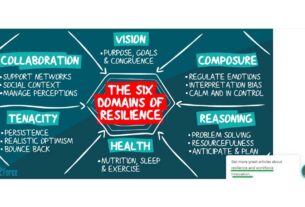Thus far this week, there’s been a timely inter-connected theme for my :education waivers, Common Core, and our individual states are being impacted. Today’s post is no different.
I broke this article late last night to my fellow NC anti CCSS warriors due to the 2 day State Board of Ed meeting beginning in just a little while. However, there is much for the rest of the states to use as information. I encourage you to review the past 2 days posts if you would like to use all 3 of the waiver posts as weapons. Today’s article, how the waivers continue to point back to Race to the Top.
Thanks to transparency, accountability laws, and requests for information, our job of finding tools to fight Common Core has been made SO much easier. Recently I was tipped off about a regularly scheduled State Board of Education meeting happening today and tomorrow here in NC. One of the agenda items caught my eye. NOT for the subject matter, but for the ‘Network’ mentioned. In fact, it’s called the “RttT STEM Affinity Network”.
The RttT STEM Affinity Network:
Housed in NC’s Dept. of Public Instruction is this ‘lovely’ component given to us, the citizens by the Race to the Top funding, that also ‘gave’ us Common Core. If you are new to my blog, you’ll need to know that STEM was the main agenda item set up by the PCAST (President’s Council of Advisors on Science and Technology) who, in turn, created a game plan given to the White House. Common Core was the ‘perfect’ guise to use in incorporating STEM into our lives. (see: https://www.commoncorediva.com/2014/09/02/from-the-files-pcast-stem-and-common-core/)
Here’s an excerpt from the NC DPI on the “Affinity Network”, “The North Carolina Department of Public Instruction’s (NCDPI) dedication to building a world-class workforce through innovative STEM education has partnered with The North Carolina New Schools to build a network of STEM-themed high schools throughout the state. North Carolina New Schools in collaboration with NCDPI has identified 20 themed high schools tied to the economic development of the state. These schools serve as either Anchor or Affiliate Network high schools that reflect the areas workforce development in either: Aerospace, Security, and Automation, Biotechnology and Agriscience, Energy and Sustainability, or Health and Life Sciences.”

http://www.gatesfoundation.org/How-We-Work/Quick-Links/Grants-Database/Grants/2006/04/OPP41526
To see the NC DPI’s website page on the other items related,
http://www.ncpublicschools.org/stem/schools/rttt/
Enter the ‘Consortium for Educational Research-North Carolina’:
Known as CERE-NC for short, this group has been crucial in reporting the success of NC’s use of RttT funding when it comes to the partnership project of NC New Schools and STEM Affinity Network. The STEM report I found on-line from this group, (which consists of SERVE Center of the University of Greensboro, Friday Institute (a pro CCSS group)housed at the NC State University, The University of NC at Chapel Hill, NC Institute of Public Policy) Why a STEM report? It was part of NC’s Race to the Top Evaluation and a kind of ‘where do we go from here’ message. I’ve included the final version of the 2013 CERE-NC, STEM Affinity Report for you. RttT-STEM_Y3-Report_FINAL_12-05-2013
Here’s a list of the items most crucial to our fight:
- 2013 marks Year 3 of NC’s RttT involvment, according to the report, page 181
- New Schools and Friday Institute were deemed ‘objective’ in their findings, page 180
- The Appendices, especially the Curriculum Development and Student Surveys, begins on page 78
- A 4th year report which was to be finalized in Sept. 2014 should reveal where the Network under the RttT Initiative is headed. (see page 75) Why this is important is since the RttT funding is be non existent beyond 2014, what replaces it will be in question.
‘The primary focus of implementation in the schools is on changing instruction to incorporate the Common Instructional Framework across all subject areas, while development of STEM projects and themes is a secondary focus.’ (an excerpt from page 74) In reference to certain Affinity schools visited.
- Industry Innovation Councils (explained well on page 43); Career Tech Education courses woven into the curriculum- heavy on Project Based Learning, page 72 (which ties into professional development) *Note: PBLs definitely tie STEM to CCSS. I’ve written about them, as have others. (see: https://www.commoncorediva.com/2014/10/25/sic-em-saturday-ccss-progressives-and-pbls/ )
- Structure of STEM Affinity Network, page 69
- Southern Regional Education Board, page 40 (they have been on the Common Core bandwagon for a long time and are currently selling CCSS aligned curricula for school counselors (I wrote about that, https://www.commoncorediva.com/2014/10/10/fridays-post-breaking-news-you-need-to-know/ )
- NC’s Virtual Public School, blending learning (also thanks to RttT), page 35
Reoccurring themes I saw: Use of data collection; use of digital technology; more student led teaching; needing the staff and community buying-in; how great STEM/CCS are; leaving larger schools and creating smaller, comprehensive schools; combining early college that streamlines/aligns and thereby over-emphasizing the need for college/career readiness; confusion over which group schools should be accountable to, LEAs, NC’s Dept. of Public Instruction or the NC New Schools. STEM’s underlying agenda that depends on extending ‘learning’ into 21st Century Community Learning Center activities; big dependence on P3s (Public Private Partnerships) like SAS (a well known Common Core supporter and data mining company); ‘rigor’; ‘relevance’; ’21st Century skills’.
Before we move on..
Here’s one principal’s view, “With the Common Core and NSP [New Schools Project], it’s all about critical thinking and problem solving and that’s what we’re leaning towards more and more and we’re trying to move away from the traditional sit and get. . . . I would say that 80 to 85% of the faculty have embraced the [NC New Schools Design Principles]. We have very few naysayers.”
How this ties to the educational waivers:
Since I just published this on Monday, a couple of days ago, I know that it means for NC, continued implementation of everything that was included in our initial application. Here’s an excerpt, ““NC has been granted an extension of one year on the ESEA waiver. I see there are several things a group from the US Dept. of Ed have found while considering NC’s extension. One that strikes me, is a ‘monitoring report’, then I see almost at the closing of the letter, this, “I am confident that North Carolina will continue to implement the reforms described in its approved ESEA flexibility request and advance its efforts to hold schools and school districts accountable for the achievement of all students.” ” (see the rest: https://www.commoncorediva.com/2014/12/01/monday-musing-educational-waivers-friend-or-foe/)
So, does your state have a STEM Affinity Network or a CERE?
Not by those exact names, however. I did find the following that may help you track down the STEM/RttT connections for your states.
- Battelle (http://www.battelle.org/our-work/stem-education/stem-learning-networks) manages at least 2 STEM networks with funding from the Gates Foundation. The Ohio STEM Learning Network (http://www.osln.org/hubs/), the Tennessee STEM Innovation Network (where they were the pilot program for STEM Boy Scouts programming), see their strategy plan until 2018: http://thetsin.org/news/resource/tennessee-stem-stragegic-plan/
- Battelle also manages the STEMx Network, which covers many of the States. The tag line for STEMx, “Transforming STEM Education and Workforce Development in the states, by the states.” (http://www.stemx.us/about/) Member states: MI, TX, OK, NM, NC, ID, IN, OR, KY, WA, NY, AZ, CA, GA, and DC (District of Columbia).
- IF you do not see your state listed above OR if you want to find out more from your state listed above, follow these suggestions:
- Check with your state’s Dept. of Public Instruction, remember, I found my journey beginning at the State Board of Education’s meeting agenda announcement.
- Notice over the past 3 days when I’ve written about waivers and education, how many colleges and universities are involved. Check your state’s higher educational institutions. Much of the research pertaining to your state will be housed there, studied there, or involved in some way. Think outside the colleges of education, if needed. I found one educational research group hidden in the college of surgery and physicians because it was considered a science project.
- Go back to the initial RttT application for your state. See what provisions your State Board of Ed promised. Follow the paper trail from there. Each plan had to be reviewed, accepted as a draft, affirmed as an action, then a copy returned to each state. Follow ups by the state level education departments has had to be made each year. You should be able to access each of those reports.
- Check where your state is in the Waiver re-authorization process. See my post from Monday of this week on where to access that information.
- IF all else fails, exercise your citizen’s right to a FOIA letter (Freedom of Information Act).
- Remember, even IF your state didn’t receive the initial RttT funding, each state is impacted by the educational waivers, by workforce, and by STEM. Being sold by at least 13 federal agencies, promoted by the U.S. President’s massive budget for it, and all the clamor of the public private partnerships, STEM will NOT be going away.
Related resources:
From the US Dept of Ed, their STEM page, http://www.ed.gov/stem
From the International Technology and Engineering Educators Association, a paper about the rise of STEM in America (be sure to note how the National Science Foundation had a big hand in this, then refer back to the PCAST report and connect the dots): http://www.iteea.org/Resources/PressRoom/AustraliaPaper.pdf
Finally, if you would like any more suggestions, have any leads from your states, or have questions, comments to send my way, I’d love to hear from you. Thank you for allowing me to be a part of your fight.


9 thoughts on “WYBI Wednesday: RttT, STEM, Education Waivers”